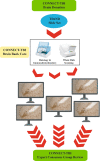COllaborative Neuropathology NEtwork Characterizing ouTcomes of TBI (CONNECT-TBI)
- PMID: 33648593
- PMCID: PMC7919306
- DOI: 10.1186/s40478-021-01122-9
COllaborative Neuropathology NEtwork Characterizing ouTcomes of TBI (CONNECT-TBI)
Abstract
Efforts to characterize the late effects of traumatic brain injury (TBI) have been in progress for some time. In recent years much of this activity has been directed towards reporting of chronic traumatic encephalopathy (CTE) in former contact sports athletes and others exposed to repetitive head impacts. However, the association between TBI and dementia risk has long been acknowledged outside of contact sports. Further, growing experience suggests a complex of neurodegenerative pathologies in those surviving TBI, which extends beyond CTE. Nevertheless, despite extensive research, we have scant knowledge of the mechanisms underlying TBI-related neurodegeneration (TReND) and its link to dementia. In part, this is due to the limited number of human brain samples linked to robust demographic and clinical information available for research. Here we detail a National Institutes for Neurological Disease and Stroke Center Without Walls project, the COllaborative Neuropathology NEtwork Characterizing ouTcomes of TBI (CONNECT-TBI), designed to address current limitations in tissue and research access and to advance understanding of the neuropathologies of TReND. As an international, multidisciplinary collaboration CONNECT-TBI brings together multiple experts across 13 institutions. In so doing, CONNECT-TBI unites the existing, comprehensive clinical and neuropathological datasets of multiple established research brain archives in TBI, with survivals ranging minutes to many decades and spanning diverse injury exposures. These existing tissue specimens will be supplemented by prospective brain banking and contribute to a centralized route of access to human tissue for research for investigators. Importantly, each new case will be subject to consensus neuropathology review by the CONNECT-TBI Expert Pathology Group. Herein we set out the CONNECT-TBI program structure and aims and, by way of an illustrative case, the approach to consensus evaluation of new case donations.
Keywords: Chronic traumatic encephalopathy; Concussion; Dementia; Neurodegenerative disease; Traumatic brain injury.
Conflict of interest statement
The authors declare that they have no competing interests.
Figures




References
-
- Bieniek KF, Blessing MM, Heckman MG, Diehl NN, Serie AM, Paolini MA, 2nd, Boeve BF, Savica R, Reichard RR, Dickson DW. Association between contact sports participation and chronic traumatic encephalopathy: a retrospective cohort study. Brain Pathol. 2020;30:63–74. doi: 10.1111/bpa.12757. - DOI - PMC - PubMed
Publication types
MeSH terms
Grants and funding
LinkOut - more resources
Full Text Sources
Other Literature Sources
Research Materials

